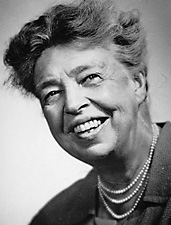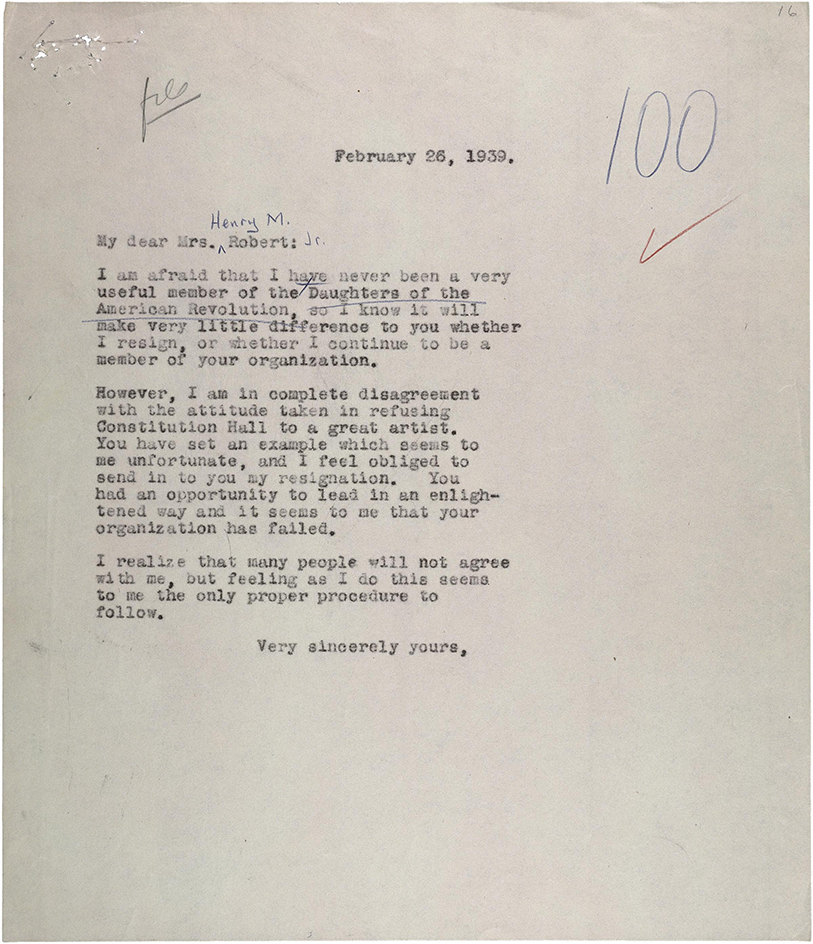Roosevelt << ROH zuh vehlt >>, Eleanor (1884-1962), the wife of President Franklin D. Roosevelt, became a distinguished public figure in her own right. She was one of the most active first ladies in American history. Roosevelt, a niece of President Theodore Roosevelt, won fame for her humanitarian work and became a role model for women in politics and public affairs.

Eleanor Roosevelt was born in New York City on Oct. 11, 1884. She was christened Anna Eleanor Roosevelt, but her family called her Eleanor, and she rarely used her real first name. Her family was wealthy and prominent, but Eleanor’s upbringing was painful. By the time she was 10 years old, both parents and a brother had died. She then was raised by a stern grandmother. Between the ages of 15 and 18, Eleanor attended Allenswood, an English boarding school. There, she made many friends and became known for her intelligence and leadership skills.
In 1905, Eleanor married Franklin D. Roosevelt, a distant cousin. The couple had six children. They were Anna Eleanor (1906-1975), James (1907-1991), Franklin Delano, Jr. (died in infancy, 1909), Elliott (1910-1990), Franklin Delano, Jr. (1914-1988), and John (1916-1981). James and Franklin, Jr., both served in the United States House of Representatives.
Loading the player...Eleanor Roosevelt
Eleanor Roosevelt began to work politically on behalf of her husband after he was diagnosed with polio in 1921. During Franklin Roosevelt’s terms as governor of New York and, later, as president, she frequently made fact-finding trips for him. She also began to play an increasing role in affairs unrelated to her husband’s career. While first lady, she traveled nationwide on lecture tours, held 350 press conferences for women reporters only, and wrote a daily newspaper column and many articles for magazines. She also worked with young people and the underprivileged, and fought for equal rights for minority groups and women.
Some of Eleanor’s actions stirred controversy. At a 1938 conference in Birmingham, Alabama, she defied a segregation ordinance (a law requiring the separation of the races) that required her to sit apart from her African American friends. In 1939, she resigned in protest from the Daughters of the American Revolution (DAR), a patriotic women’s organization. The organization had prohibited Marian Anderson, a famous African American singer, from performing at the DAR’s Constitution Hall in Washington, D.C.

Following her husband’s death in 1945, Roosevelt became a delegate to the United Nations (UN) General Assembly. In 1946, she was elected chairman of the UN’s Human Rights Commission, part of the Economic and Social Council. She helped draft the Universal Declaration of Human Rights (see Human Rights, Universal Declaration of). In 1961, she returned to the General Assembly. Later that year, President John F. Kennedy appointed her head of the Commission on the Status of Women.
Loading the player...Eleanor Roosevelt on human rights
Eleanor Roosevelt wrote several books. They include This Is My Story (1937), This I Remember (1950), On My Own (1958), and Tomorrow Is Now (published in 1963, after her death). Roosevelt died on Nov. 7, 1962.
See also Eleanor Roosevelt National Historic Site; Roosevelt, Franklin Delano.
